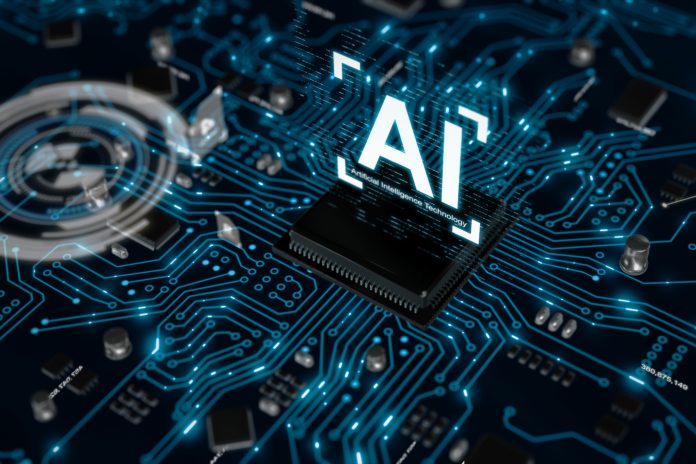Here, Erik Dahlquist discusses the FUDIPO Project, touching on how facilities like oil refineries and power plants can use AI systems
FUDIPO is a project funded by the European Commission under H2020 programme, SPIRE-02-2016: “Plant-wide monitoring and control of data-intensive processes”, which started on October 1st, 2016 and ends on 30th September 2020.
Mälardalen University coordinates the project, and the consortium is composed of energy experts, applied mathematicians, and software engineering experts to face the SPIRE topic. The goal with FUDIPO project is to introduce AI systems into process industries. The special demands for industry are to have very robust functions and a good possibility to keep control of all functions to avoid causing new problems! This demands a structured work, but still utilising the most advanced functions to benefit from this new world, and see that European industry really stay in the forefront of production development. This will give big economic benefits, but also drive the efficient use of available resources at the same time as we reduce negative climate effects.
Thus, FUDIPO is developing and testing (in five case studies) advanced dynamic physical (complemented with soft sensors) and statistical models, like Bayesian networks and machine learning models, to form advanced diagnostic, decision support, optimisation and model predictive control. FUDIPO optimises the complete process-line, and not just one step at a time, through model-based multi-variable adaptive and predictive feed-forward control. This is a completely novel approach not seen anywhere in the world as far as we are aware of. Thus, the project aims energy and resource savings as well as better environmental performance in EU industries.
The developed system is implemented in full-scale, and validated in five case studies:
1. Oil refinery (Tüpras)
In the oil refinery of Tüpras, the production of diesel takes lace in a unit with the focus of increase the production within European standards, e.g. for distillation point, whose variation is unmeasured. FUDIPO brings advanced methods for process control, thus reducing give-away product below or above European limits. Physical and statistical models have been developed to estimate product qualities, as well as a diagnostic system to detect faults of temperature sensors and NIR models for feed properties. FUDIPO advancements could save 120-200 TWh/y of energy in EU oil refineries.
2. Large heat and power plant (Mälarenergi)
The heterogeneity of the waste used for cogeneration plant causes operational problems and challenges in the control of emissions. This control is improved with FUDIPO, thus decreasing downtime, fluctuations, corrosion, fouling and agglomeration. A physical model running as a “digital twin” and used together with measured data to diagnose possible process and sensor faults using a Bayesian net for probability calculations. This is combined also with MPC for controlling moisture in the fuel going to the boiler, where on-line measurements of the waste fuel are made to determine content of plastic and moisture. Also, an inventory management is made in a production planning tool.
3. Waste-water treatment plant (ABB)
In the WWTPs, the aeration demand constitutes 50% of the electric energy demand. FUDIPO brings development of control algorithms for a better performance, measuring quality of incoming waste, and thus lowering the aeration demand to save energy. A physical model tested with off-line data has been developed, as well as a phyton model to detect sensor fault, and a model predictive control. Thus, FUDIPO could save 17-41 TWh/y in EU’s WWTPs.
4. Pulp and paper industry (Billerud-korsnäs)
The plant has three fiber lines with different pulp qualities. The most important parameter is Kappa number, which measures how much lignin is left in the pulp after the digester, and whose control is difficult. FUDIPO leads to a more stable process and fault diagnostics due to better control of Kappa number. Thus, a physical model is run as a digital twin and NIR spectra is measured on all incoming wood chips to the digester. This is predicting lignin content and reactivity. With the model we predict how much lignin is dissolved and give feedback from measurement of actual values after the cook, to continuously improve the prediction model in a learning system. This is used for process and sensor diagnostics, data reconciliation, MPC (model predictive control) and production optimisation. Also, machine learning (ML) is used for prediction of kappa number after the cook. In EU, implementing FUDIPO techniques could save 86-95 TWh/y of energy in Pulp and Paper industries.
5. Micro heat and power turbine (MTT)
The EnergyTwin system has high maintenance costs and needs to improve its diagnosis efficiency and decision support to installers and operators. FUDIPO is increasing efficiency supporting clients with scheduled and predictive maintenance support and planning. A fleet management of micro gas turbine CHP plants is implemented. Here both physical and statistical models (Machine learning) are used for performance monitoring from remote.
Considering all energy savings together, total energy savings in EU thanks to the implementation of FUDIPO proposed and similar techniques are 353-526 TWh/t, which is in the range of 3% of all energy used within EU for all purposes.
FUDIPO: Open-source toolbox
In the FUDIPO project one platform with primarily commercial software and one with only open source software have been developed. The open source software has the advantage that the user does not need to pay any license fees, but at the same time you don’t get support if you need adjusted codes or improved functions, which the commercial suppliers can give you, but to a specified cost. If you want to develop your own functions and integrate in a platform it may be easier in the open source platform, but if you just want to get the functionality and support to this, you can choose the other.
In both cases new AI functions are continuously added to both platforms. This includes e.g. ANN (artificial Neural nets), BN (Bayesian nets), PLS models and other regression models, multi-variate analysis, ML (machine learning), etc. It also includes simulation tools like Open Modelica for building physical models for any application.
Stay informed of our activities and results!
Please note: This is a commercial profile











